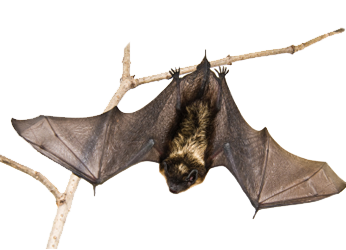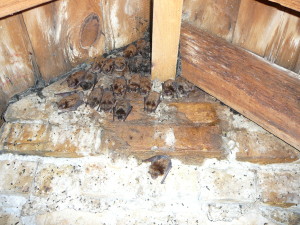
Bats
Bats
ABOUT BATS:
There are over 900 species of bats found world wide, approximately 20 found throughout Canada and less than 10 found in Southern Ontario. The 2 most commonly found in homes in the London area are the Big Brown and Little Brown bat. The Big Brown hibernates inside the attics and walls of a home for the winter; Whereas most of the Little Brown bats migrate to caves found in Southern Ontario. Both species of bats live in colonies that vary in numbers from twenty bats up to several thousand bats.
JOB DESCRIPTION:
The removal of bats from a building involves sealing of all openings that would allow a bat to gain entry into the home. These areas include chimneys, roof vents, roof / soffit intersections, roof fascia gaps, wall soffit gaps, and many more. This is a very thorough and involved procedure that should be left up to a trained professional. All entry holes are located and special bat one way doors are installed to allow the bat colony to leave from the building at night, and prevents them from re-entering. If you can squeeze your pinky finger into a hole or gap, bats can get through it.
WORDS FROM WILD THINGS:
In most circumstances when a bat ends up inside the living area of the home it originated from a problem in the attic space, or walls of the home. In the wintertime bats are forced to move around inside the home when the outside temperature fluctuates. The reason being is that they must keep their body temperature constant to remain sleeping to survive the long winter ahead. So bats that are literally half asleep fall down in wall voids and enter the home through an unfinished part of the basement or furnace room. In late summer (July, August,September) young bats that are not experienced fliers, tend to fall down inside the walls leading to the basement. This is because they weren’t able to manoeuvre the flight from inside the attic to the exit hole leading outside. It is a common misconception that they come in through open windows and doors.

DAMAGE:
Numerous bats living in an attic or in the walls of a home cause odour and noise problems. Their accumulated droppings, also called guano can raise many health concerns.
CONCERNS & DISEASES:
Rabies and Histoplasmosis are the 2 major health concerns surrounding bat problems. Histoplasmosis originates from a fungus growing in the accumulated droppings or guano. This is a disease of the lungs that can spread into other parts of the body. It can be contracted by breathing in particles in the air from bat or bird droppings. Bat and bird droppings should not be removed or disturbed without proper safety equipment. Rabies affects 3-7 % of the bats submitted for testing in the London area. This means that approximately 4 out of every 100 bats found inside a home has the potential to carry rabies. A bat found inside the home should be tested for rabies if there was any unknown contact with humans or pets. Although bats carry fleas, ticks, mites and bed bugs these seldom pose any threat to human health.
BENEFITS:
Bats consume approximately half their weight in insects every night. This means that bats in Canada consume a few thousand tons of insects each night. This has a beneficial effect on agriculture, forestry, gardening and many more. By keeping insect populations under control, bats help us to avoid devastating insect damage to crops and forests. They also keep mosquito populations down so you can enjoy the beautiful outdoors.
LITTLE KNOWN FACTS:
- Certain bat species may live upwards of twenty and thirty years
- They are the only flying mammals in the world
- Females give birth to only one baby each year
- Baby bats may be fed by a different mother to allow their own to go out to feed
- They may also carry rabies for several seasons before it’s fatal
